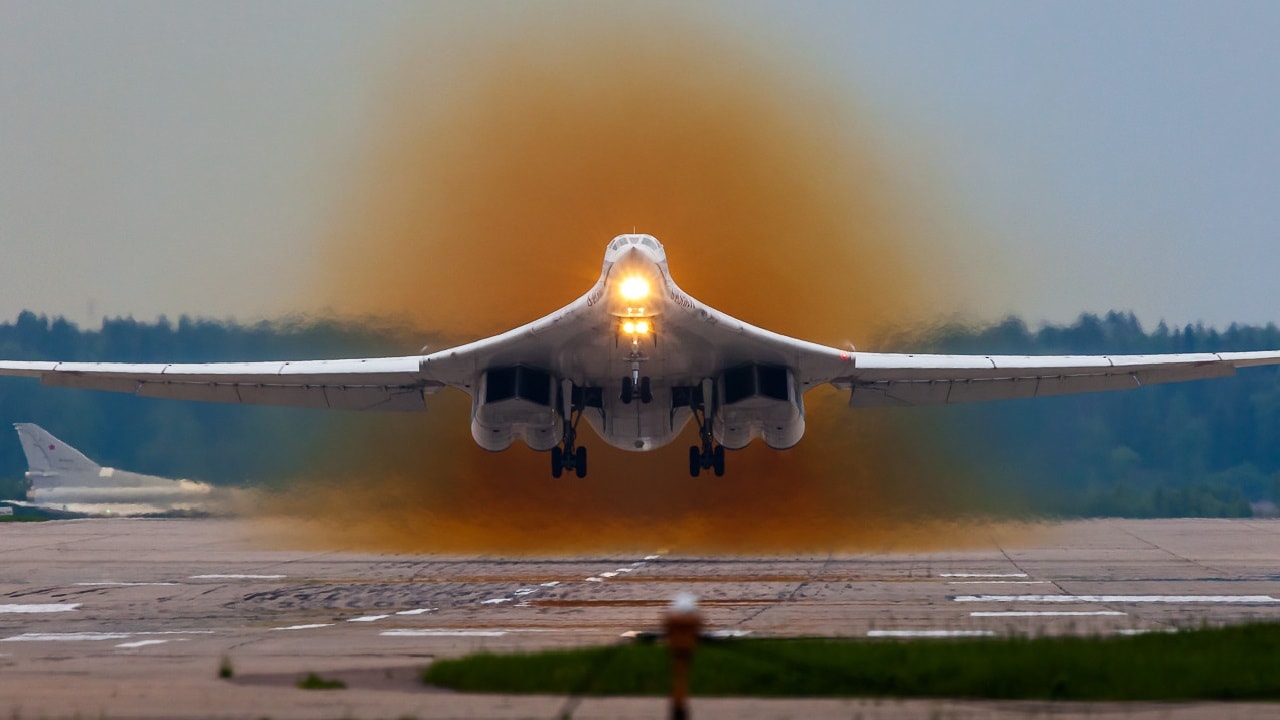Russia’s upgraded Tu-160M Blackjack strategic bomber could be compared to ongoing U.S. efforts to maintain and improve the famous B-52.
Unlike the Vietnam-era classic B-52, the Tupolev Tu-160 first entered service in the Soviet era during the 1980s. Russia’s Tupolev looks a little more like the large, elongated B1-B bomber able to carry a massive payload, bringing the max take-off weight up to 300 tons.
Rebooting the Tu-160
While the production line was stopped in 1995, Putin decided to restart the line as recently as 2015 to add upgraded bomber platforms to the Russian arsenal.
The idea, as described in a Janes report, was to offer a bridge to offset delays with Russia’s new PAK DA stealth bomber.
“The aircraft can carry up to six Kh-55SM ground-attack cruise missiles, each with a 200 kiloton thermonuclear warhead, or Kh-555s armed with a conventional high-explosive fragmentation warhead,” writes Kyle Mizokami, who covers defense and security issues for Popular Mechanics.
Moving forward, Russia plans to acquire as many as 50 Tu-160M aircraft and is modernizing 16 more to meet “M” standards. Upgrades to the 160M have been arriving in several phases, with the new Tu-160M1 variant, will include a new navigation system and autopilot technologies.
The Janes report says Russia’s Rostec plans to produce roughly two new Tu-160Ms per year to reach a total of 10 aircraft between 2023 and 2027.
“The second Tu-160M2 phase includes the new Novella NV1.70 radar, a digital ‘glass’ cockpit, modern communications and anti-jamming equipment, upgraded NK-32 engines (designated NK-32-02), and modern conventional and nuclear weapons,” it says in the Janes paper.
Game of Blackjack
The Tu-160M is much more modern than the decades-old B1-B, yet Russia plans for its bomber aligns to an extent with U.S. plans for its fleet.
In order to ensure a continued, ready fleet of bombers, the U.S. Air Force is extending the life of the B1-B and B-2 aircraft through intense upgrades changing the performance characteristics of both aircraft.
Russia is arguably doing the same thing with its new Tu-160M strategic bomber, as Russian news reports explain that the Tupelov will support, be produced, and fly alongside the PAK DA when it arrives in the coming years.
This is extremely significant, as Russia clearly seeks to maintain an active and capable bomber fleet, yet the Tu-160M bomber suffers many of the same challenges likely to be encountered by the B1-B and B-52. Simply put, Russia’s legacy bomber does not have the stealth required for today’s environment.
While it does have a slightly rounded fuselage, which could give it some advantage, a super large, non-stealthy bomber such as the Tu-160M will likely need to be restricted to permissive environments as it would likely be extremely vulnerable to NATO air and ground attacks.
Kris Osborn is the Military Affairs Editor of 19FortyFive and President of Warrior Maven – Center for Military Modernization. Osborn previously served at the Pentagon as a Highly Qualified Expert with the Office of the Assistant Secretary of the Army—Acquisition, Logistics & Technology. Osborn has also worked as an anchor and on-air military specialist at national TV networks. He has appeared as a guest military expert on Fox News, MSNBC, The Military Channel, and The History Channel. He also has a Masters Degree in Comparative Literature from Columbia University.

